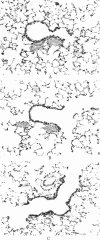Abstract
Clinical and experimental studies on respiratory involvement and alterations in immune status were carried out. Respiratory distress occurring in these patients has improved gradually for 14 years but still remains. Copious expectoration at an early stage of the disease may be related to the fact that a number of discrete polychlorinated biphenyls (PCBs) are distributed throughout the lung parenchyma. For accumulation in the bronchial mucosa, structural requirements and specific dose dependence of PCBs have been clearly shown; however, pathological and physiological studies have indicated that respiratory involvement in yusho is mainly small airway disease that may be caused by involvement of cellular component (Clara cells) in bronchioles and/or associated infection. Respiratory distress is often exacerbated by viral or bacterial infection. Changes in the immune status in PCB and polychlorinated dibenzofuran (PCDF) poisoning are as follows: IgA and IgM in the serum are decreased at an early stage of the disease and then return to normal; suppression of cellular immunity was reported in Taiwanese patients and some may remain in the later stages of the disease, as shown in our patients. PCDFs now appear to be the main causal agents in yusho. Rats given PCDFs showed necrosis of the Clara cells in bronchioles and marked thymus atrophy, while few such changes were noted in rats given PCBs. Therefore, further examination is needed for the difference of the toxic effects between two compounds.
Full text
PDF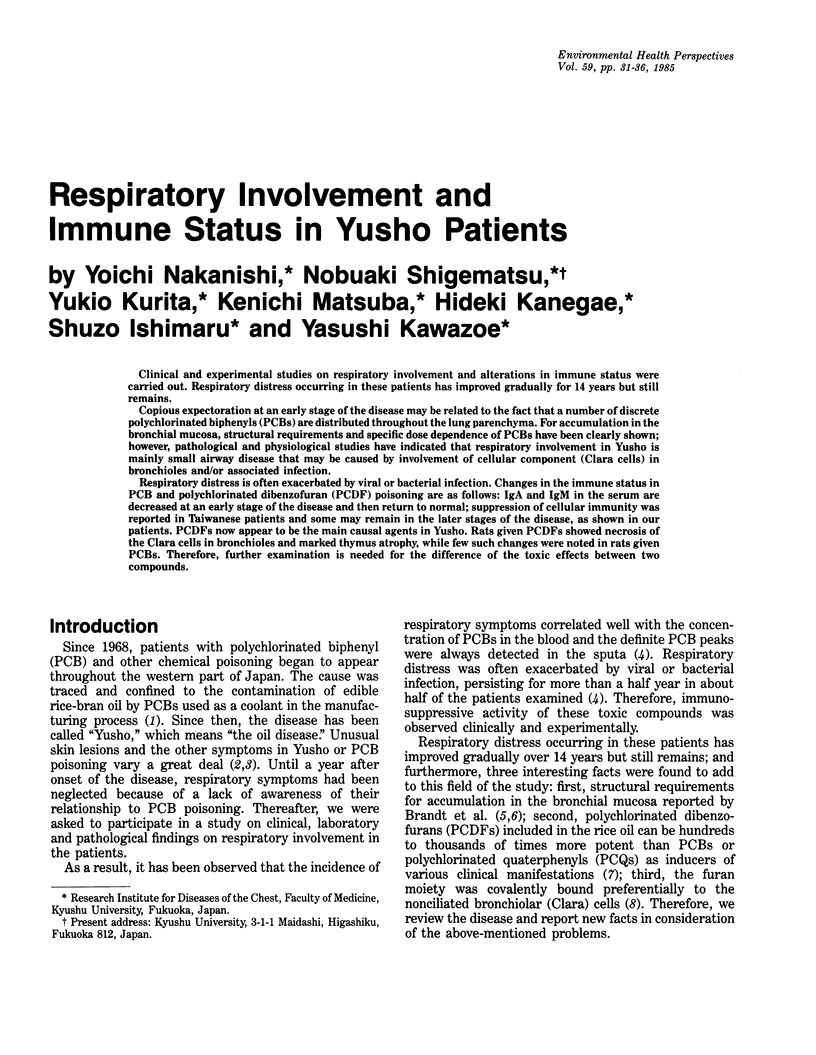
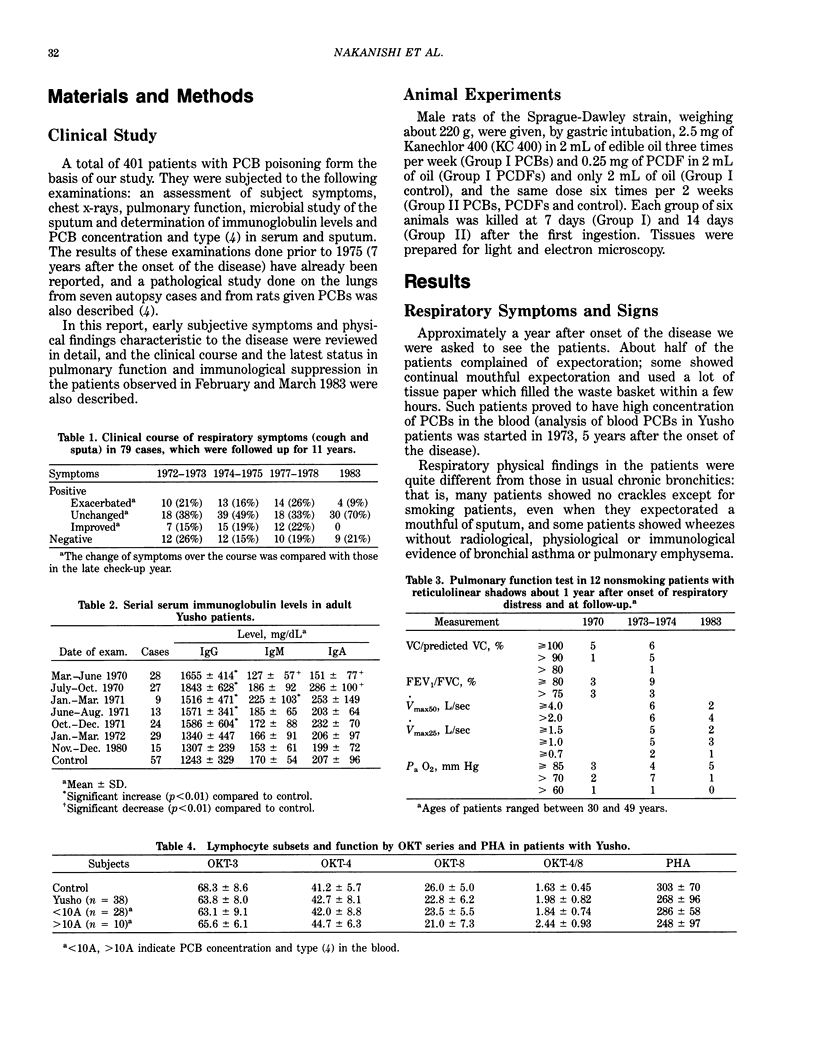
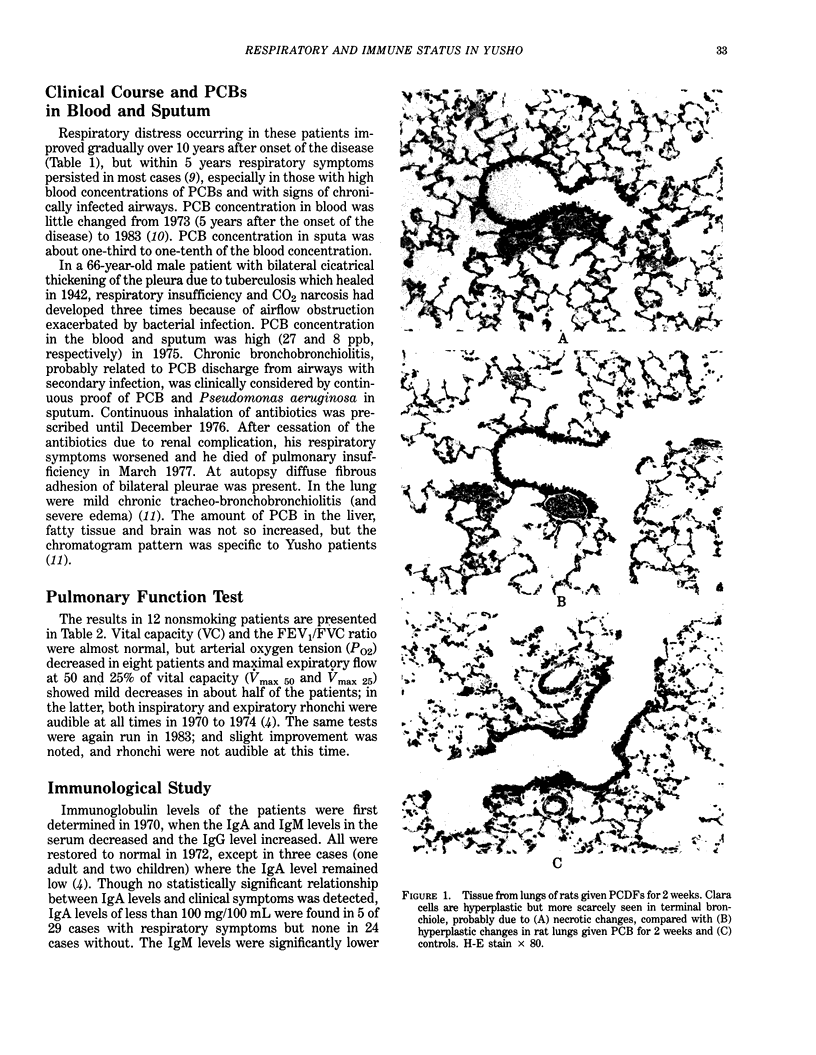
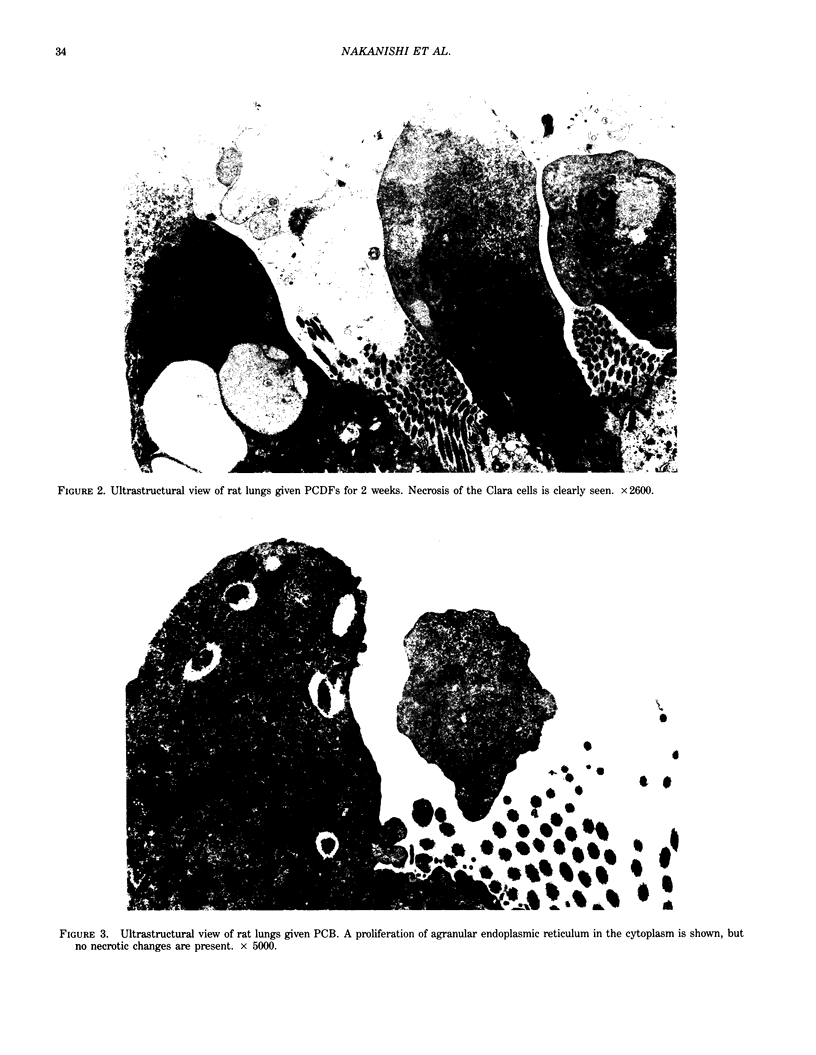
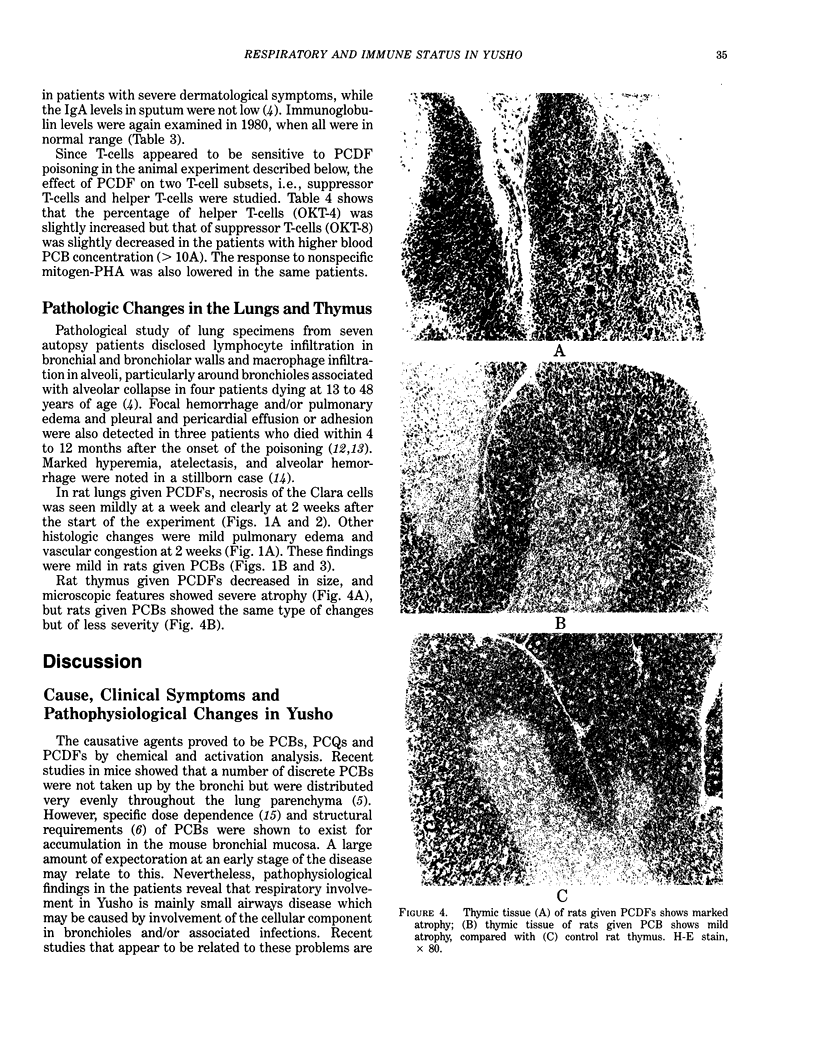
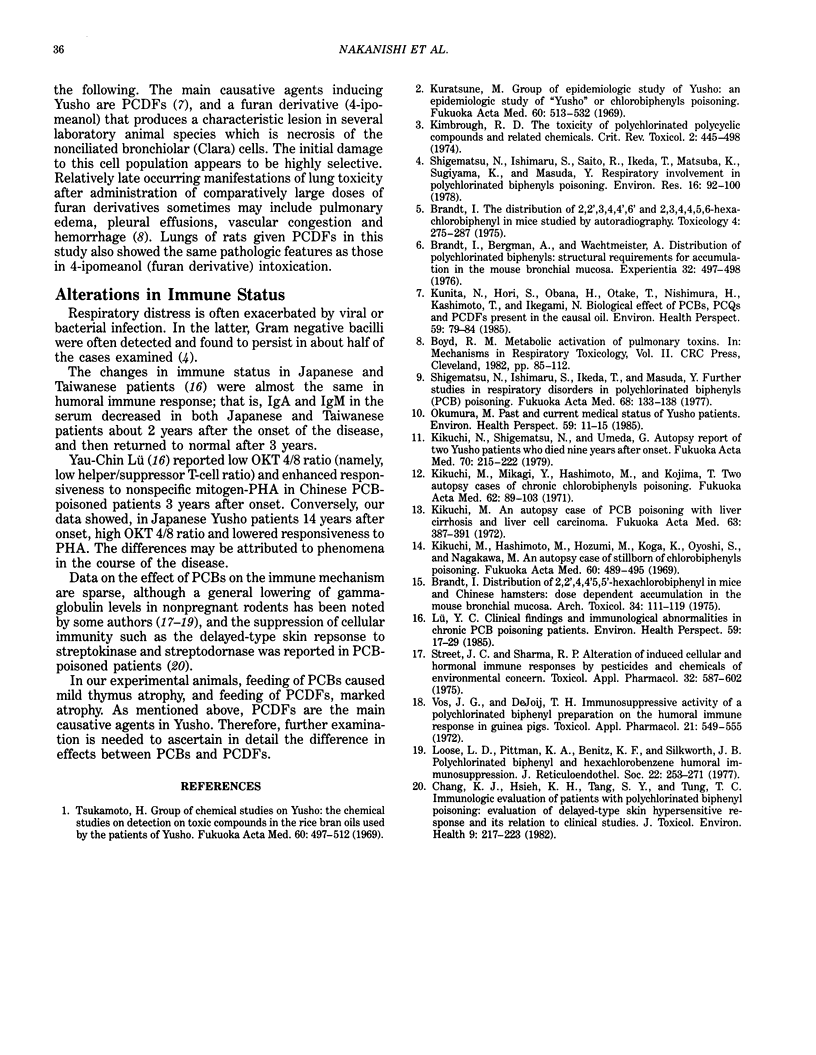
Images in this article
Selected References
These references are in PubMed. This may not be the complete list of references from this article.
- Brandt I., Bergman A., Wachtmeister C. A. Distribution of polychlorinated biphenyls: structural requirements for accumulation in the mouse bronchial mucosa. Experientia. 1976 Apr 15;32(4):497–498. doi: 10.1007/BF01920818. [DOI] [PubMed] [Google Scholar]
- Brandt I. Distribution of 2,2(1),4,4(1),5,5(1)-hexachlorobiphenyl in mice and Chinese hamsters: dose dependent accumulation in the mouse bronchial mucosa. Arch Toxicol. 1975 Oct 20;34(2):111–119. doi: 10.1007/BF00353311. [DOI] [PubMed] [Google Scholar]
- Brandt I. The distribution of 2,21,3,4,41,61, and 2,31, 4,41,51,6- hexachlorobiphenyl in mice studied by whole-body autoradiography. Toxicology. 1975 Jul;4(3):275–287. doi: 10.1016/0300-483x(75)90050-5. [DOI] [PubMed] [Google Scholar]
- Chang K. J., Hsieh K. H., Tang S. Y., Tung T. C., Lee T. P. Immunologic evaluation of patients with polychlorinated biphenyl poisoning: evaluation of delayed-type skin hypersensitive response and its relation to clinical studies. J Toxicol Environ Health. 1982 Feb;9(2):217–223. doi: 10.1080/15287398209530156. [DOI] [PubMed] [Google Scholar]
- Kikuchi M., Shigematsu N., Umeda G. [Autopsy report of two yusho patients who died nine years after onset (author's transl)]. Fukuoka Igaku Zasshi. 1979 Apr;70(4):215–222. [PubMed] [Google Scholar]
- Kimbrough R. D. The toxicity of polychlorinated polycyclic compounds and related chemicals. CRC Crit Rev Toxicol. 1974 Jan;2(4):445–498. doi: 10.3109/10408447309025705. [DOI] [PubMed] [Google Scholar]
- Kunita N., Hori S., Obana H., Otake T., Nishimura H., Kashimoto T., Ikegami N. Biological effect of PCBs, PCQs and PCDFs present in the oil causing yusho and yu-cheng. Environ Health Perspect. 1985 Feb;59:79–84. doi: 10.1289/ehp.59-1568087. [DOI] [PMC free article] [PubMed] [Google Scholar]
- Loose L. D., Pittman K. A., Benitz K. F., Silkworth J. B. Polychlorinated biphenyl and hexachlorobenzene induced humoral immunosuppression. J Reticuloendothel Soc. 1977 Sep;22(3):253–271. [PubMed] [Google Scholar]
- Lü Y. C., Wu Y. C. Clinical findings and immunological abnormalities in Yu-Cheng patients. Environ Health Perspect. 1985 Feb;59:17–29. doi: 10.1289/ehp.59-1568085. [DOI] [PMC free article] [PubMed] [Google Scholar]
- Shigematsu N., Ishimaru S., Ikeda T., Masuda Y. [Further studies on respiratory disorders in polychlorinated biphenyls (PCB) poisoning. Relationship between respiratory disorders and PCB concentrations in blood and sputum (author's transl)]. Fukuoka Igaku Zasshi. 1977 Mar;68(3):133–138. [PubMed] [Google Scholar]
- Shigematsu N., Ishimaru S., Saito R., Ikeda T., Matsuba K., Sugiyama K., Masuda Y. Respiratory involvement in polychorinated biphenyls poisoning. Environ Res. 1978 Jul;16(1-3):92–100. doi: 10.1016/0013-9351(78)90146-9. [DOI] [PubMed] [Google Scholar]
- Street J. C., Sharma R. P. Alteration of induced cellular and humoral immune responses by pesticides and chemicals of environmental concern: quantitative studies of immunosuppression by DDT, aroclor 1254, carbaryl, carbofuran, and methylparathion. Toxicol Appl Pharmacol. 1975 Jun;32(3):587–602. doi: 10.1016/0041-008x(75)90123-4. [DOI] [PubMed] [Google Scholar]
- Urabe H., Asahi M. Past and current dermatological status of yusho patients. Environ Health Perspect. 1985 Feb;59:11–15. doi: 10.1289/ehp.59-1568099. [DOI] [PMC free article] [PubMed] [Google Scholar]
- Vos J. G., de Roij T. Immunosuppressive activity of a polychlorinated diphenyl preparation on the humoral immune response in guinea pigs. Toxicol Appl Pharmacol. 1972 Apr;21(4):549–555. doi: 10.1016/0041-008x(72)90011-7. [DOI] [PubMed] [Google Scholar]



